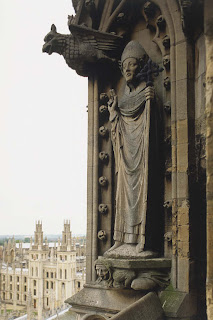 It is customary for each of the parties within the English Catholic church to argue that their party constitutes the group which truly embodies Anglicanism. I will not try to make such an argument, for it is undeniable that Anglicanism is made of many factions. Nevertheless, it seems that it would be valuable to consider the very first post-reformation doctrinal document put out by the Church of England.
It is customary for each of the parties within the English Catholic church to argue that their party constitutes the group which truly embodies Anglicanism. I will not try to make such an argument, for it is undeniable that Anglicanism is made of many factions. Nevertheless, it seems that it would be valuable to consider the very first post-reformation doctrinal document put out by the Church of England. QUOTE
Article 1] The principal articles concerning our Faith.
First, As touching the chief and principal articles of our faith, saith it is thus agreed as hereafter followeth by the whole clergy of this our realm, we will that all bishops and preachers shall instruct and teach our people, by us committed to their spiritual charge, that they ought and must most constantly believe and defend all those things to be true, which be comprehended in the whole body and canon of the Bible, and also in the three Creeds or symbols", whereof one was made by the apostles, and is the common creed, which every man useth; the second was made by the holy council of Nice, and is said daily in the mass; and the third was made by Athanasius, and is comprehended in the Psalm Quicunque eult: and that they ought and must take and interpret all the same things according to the selfsame sentence and interpretation, which the words of the selfsame creeds or symbols do purport, and the holy approved doctors of the Church do entreat and defend the same. (The Ten Articles, 1536, Thomas Cranmer).
COMMENTARY
The first of the ten article forms the basis for truth & authority in the Anglican Church, and commits that truth and authority to the clergy of the church for the purpose of instructing and teaching our people. Not only are the clergy to teach those things, but they are to ensure that it is taught in such a way that the people understand that they must most constantly be believed and defended to be true. In short, the opening lines of this article tells us that there exists a repository apostolic tradition, it is in the hands of the clergy, and they are to pass on that same storehouse to God’s people who along with them have the responsibility of retaining it and passing it on.
According to article one, this apostolic storehouse is found in the whole body and canon of the Bible, and also in the three Creeds or symbols, whereof one was made by the apostles, and is the common creed, which every man useth; the second was made by the holy council of Nice, and is said daily in the mass; and the third was made by Athanasius. Amazingly enough, this is not the sola scriptura doctrine of the new thinkers of the day, Luther, Zwingli, or Calvin. Rather, it is the ancient thinking of the
Furthermore, the reason all are to believe this is because the holy approved doctors of the Church do entreat and defend the same. In other words, because this is what the whole church has always believed.
What we find here is nothing more & nothing less than a form of Orthodoxy that existed in
No comments:
Post a Comment